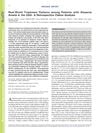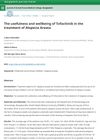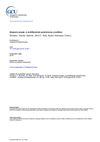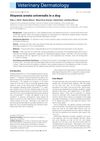Real-World Assessment of Disease Characteristics and Clinical Outcomes in Alopecia Areata in a Global Noninterventional Observational Cohort (ADAAGIO)
September 2025
in “
Clinical and Experimental Dermatology
”
TLDR Alopecia areata treatments often don't lead to lasting improvement.
The study "Real-World Assessment of Disease Characteristics and Clinical Outcomes in Alopecia Areata in a Global Noninterventional Observational Cohort (ADAAGIO)" involved 741 patients with ≥50% scalp hair loss (SHL) from the UK, France, Spain, and Germany. The median age was 27 years, with 52.6% female participants. The primary endpoint was the Severity of Alopecia Tool (SALT) score, with a mean score of 63.5 at the start. Treatments included topical corticosteroids (55.6%), systemic and intralesional corticosteroids (44.1% and 22.5%), systemic immunosuppressants (22.0%), and minoxidil (17.3% oral, 19.4% topical). After 12 months, the mean SALT score reduction was 44.6%, but only 10.6% of patients achieved and maintained a SALT score ≤20 for at least 6 months. The findings suggest that the effectiveness of current treatments for alopecia areata may be suboptimal.





